
views
Starting Seedlings and Cuttings
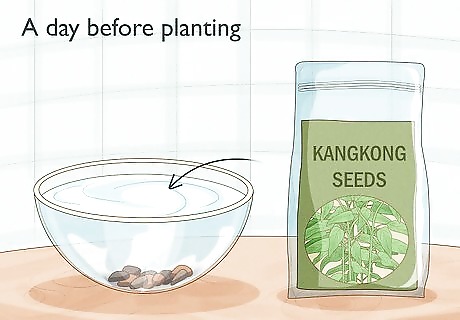
Soak seeds in water a day before planting. This plant loves water, and soaking the seeds ahead of planting will start the germination process. Just place them in a shallow basin with a thin covering of water. You can find kangkong seeds online or at some gardening stores. You'll need at least 10 seeds to get a small crop of water spinach. Plants grown from seeds may not do as well as plants taken from cuttings. They also take longer to get established.
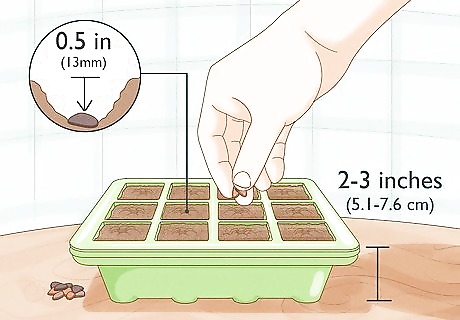
Plant the seeds inside in trays to start. Place potting soil in your seedling tray. Create a small hole that's about 0.5 in (13 mm) deep. Drop in 1-2 seeds in each hole, and cover the seeds up with potting soil. The tray should be at least 2 to 3 inches (5.1 to 7.6 cm) deep so the plant can start developing roots.
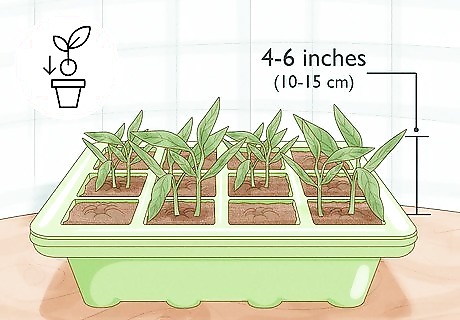
Transplant the seedlings when they reach 4 to 6 inches (10 to 15 cm). These plants need a decent amount of growth before you move them outside. Once they reach this height, start checking for leaves. They should have 4 well-established leaves before you move them.
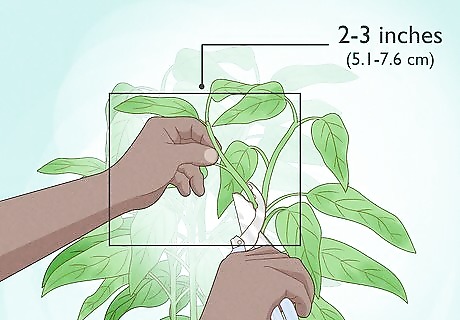
Start with cuttings from another plant for a quicker method. Wait at least a day after harvesting before you take a cutting. Cuttings should be at least 2 to 3 inches (5.1 to 7.6 cm) long. Place the cuttings in water, stem side down. Leave them in the water, changing it out every day or so. In a couple of days, they should start growing roots. Wait until day 9 or so before you try to plant them. They should have a well-established root system by then.
Planting Kangkong in the Ground
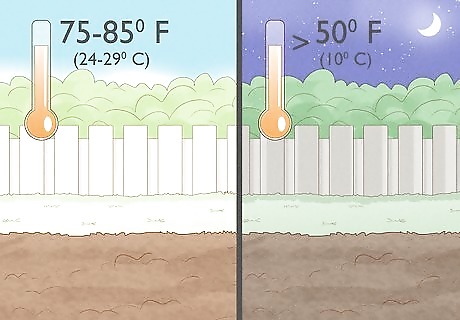
Wait until nighttime temperatures rise above 50 °F (10 °C). This plant thrives in a temperature of 75 to 85 °F (24 to 29 °C). However, it can be damaged if the temperatures drop below 50 °F (10 °C). Make sure your area has warmed up enough before you move your plants outside. Definitely wait until several weeks after the last frost before taking these plants outside. Don't plant your kangkong until the nighttime temperature remains well above 50 °F (10 °C).
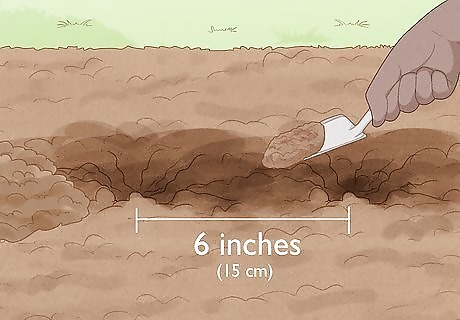
Dig a small hole with a spade or your hand. The hole should be just big enough to fit the seedling or cutting. You can just use your hand with a gardening glove if the ground is soft enough. If it's not, you'll need to use a small spade to make the hole. Do not put plants closer than about 6 inches (15 cm) apart.

Plant the seedlings or cuttings. Put the seedling in the hole you've just dug. Fill in the hole with dirt, and pat down the top of the soil. Make sure the plant is solidly in the ground before moving on to the next one.
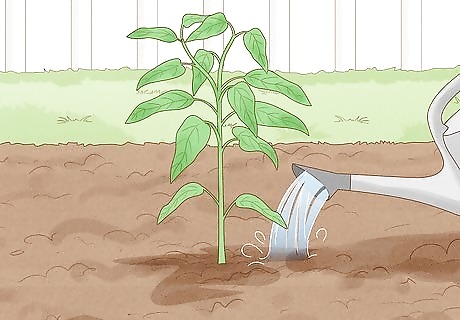
Water the plants thoroughly. These plants thrive on water, so once you get them in the ground, provide enough water to soak the ground. You want to get them well established with plenty of water. You should irrigate this crop every 1-2 days.
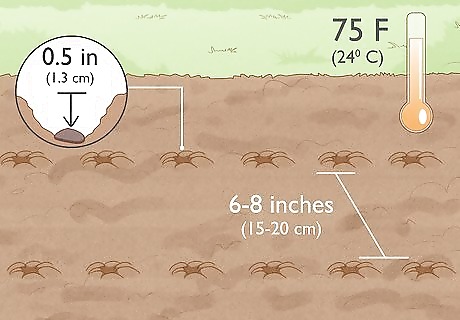
Sow seeds outside if you prefer. Start with rows that are 6 to 8 inches (15 to 20 cm) wide. For every 1 foot (30 cm), plant 6-10 seeds, spreading them out evenly along the row, spacing them out side-to-side as well as lengthwise along the row. Plant the seeds about 0.5 in (1.3 cm) deep, and cover them with soil. Wait until the daytime temperature is consistently over 75 °F (24 °C).
Settling Kangkong in Water
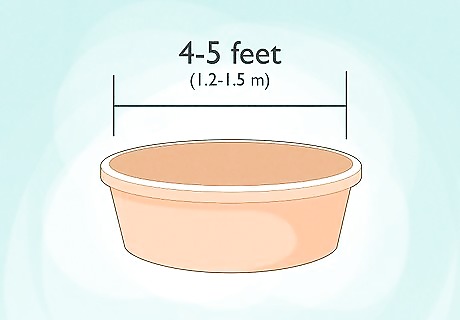
Choose a large pot or basin for your kangkong. Kangkong can grow in a pot of water. You can choose as large a pot as you want. However, keep in mind that you need to be able to reach to the middle of the pot to harvest your plants, so keep it under 4–5 feet (1.2–1.5 m). You'll also want to be able to inspect your plants for diseases, so make sure the pot is small enough for that purpose.
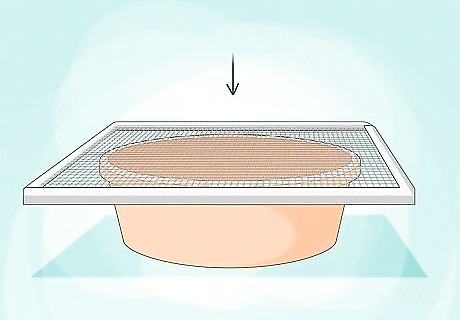
Set a steel mesh into the top of the pot. This mesh will hold the cuttings just under the water. That way, they won't sink to the bottom, but they'll still get plenty of water. You can find steel mesh online or at home improvement stores. You'll need enough to stretch across your pot, so measure ahead of time. If your mesh is fine enough, you can actually germinate the seeds on top of the mesh. However, if it's not very fine, you'll need to use cuttings.
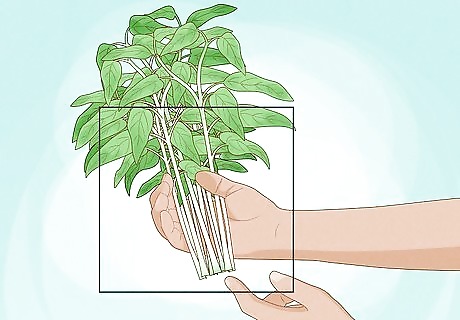
Pick the Pak Quat or "white stem" variety for your basin. This variety grows best in aquatic situations like a large pot or basin. You might also find it under the name "water ipomea." The other variety, Ching Quat, can also be grown in water, but it can be planted in a garden, as well.
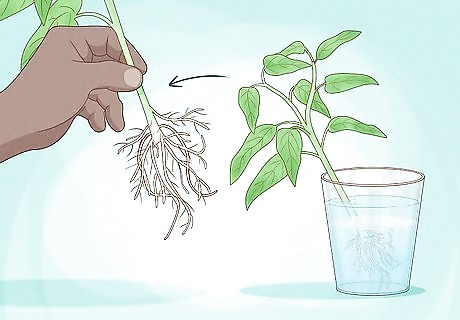
Wait until your cuttings have well-established roots. Before putting them in your main growing pot, grow the roots in a cup or pitcher of water. That way, they'll start out happier and healthier in your large pot. Your roots should have about 9 days of growth on them.

Place the cuttings on top of the mesh. Set the cuttings in the top of the container. You can prop the cuttings up against each other or even lightly tie a piece of string around them. Eventually, they will stand up on their own when their roots start sinking into the mesh below. Make sure the leaves are above the surface.
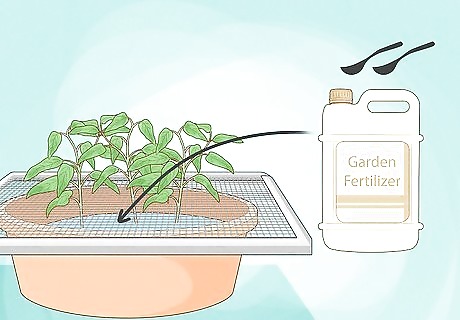
Fertilize the water. Since you're not growing this plant in the soil, you'll need to provide nutrients. Select a fertilizer that is high in nitrogen. Use about 2 tablespoons (30 mL) of the garden fertilizer per gallon of water in the container. If you're not using liquid fertilizer, mix the fertilizer with a little water before pouring it into the container.










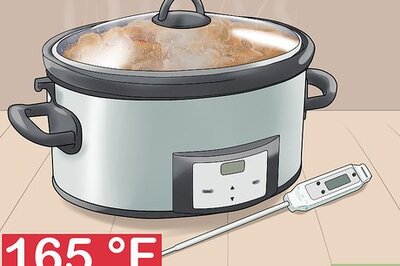









Comments
0 comment